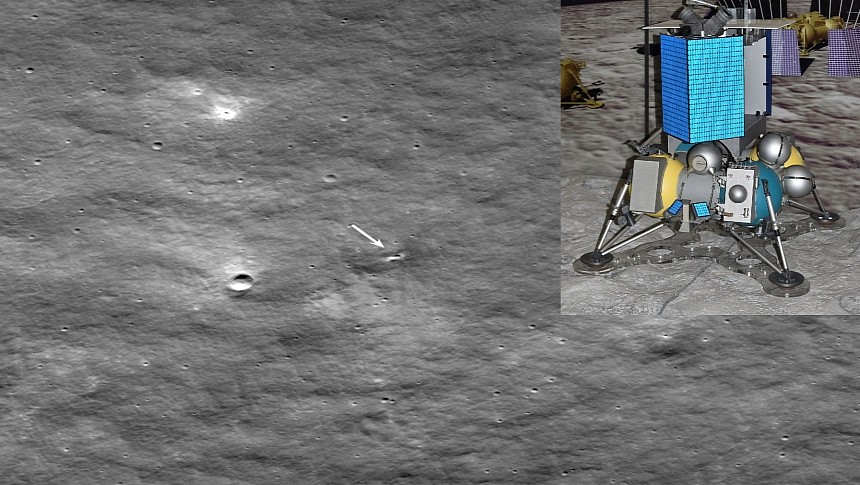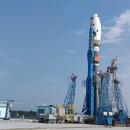As NASA's Lunar Reconnaissance Orbiter made its rounds around the Moon this week, the 14-year veteran space probe ran across something peculiar. In a spot near the southwest rim of the Moon's Pontécoulant G crater that LRG had scanned many times before sat another freshly excavated impact crater with its ejecta still sitting strewn across its outer perimeter. Indeed, the contents of this newest lunar crater were man-made in origin. More specifically, they were Russian in origin, the remains of the failed Roscosmos lander probe Luna 25.
Using impact-site coordinates published by Roscosmos themselves, NASA's LRO could precisely pinpoint the location of Russia's doomed lunar landing probe. The stricken spacecraft slammed into the lunar surface on Aug. 19th of this year. It was the first Russian space probe designed specifically for lunar exploration since the fall of the Soviet Union in 1991, and the Luna 24 mission launched in 1976. But the mission was doubly important for Roscosmos because the race to be the first nation to land a probe on the lunar south pole would not be a one-horse race.
Launched around the same time as the Luna 25 mission, India's Chandrayaan-3 mission with the Vikram Lander and the adorable Pragyan rover in tow landed considerably more successfully than Luna 25 mere days after the latter careened out of control onto the lunar surface. The move cements India's place as the fourth spacefaring nation to land probes on the Moon. It also makes them the first to land man-made technology onto the lunar south pole, a place believed to be abundant in resources vital to the future of manned space exploration, like water ice and the ever-controversial helium-3 isotope.
For the moment, Luna 25's remains are still embedded in a crater around ten meters in diameter at the lunar south pole, approximately 400 kilometers (248.5 m) from its intended landing sight. As Roscosmos continues to comb through the data to find the culprit for the accident and NASA continues to observe the wreck from orbit, questions as to whether Roscosmos could even muster another attempt at a lunar landing among the ongoing Russian invasion of Ukraine continues to bedevil the agency. For the moment, no announcement of follow-up mission has been put forth.
One can only assume advancements in space exploration are taking a back seat in Russian politics as the country struggles to wrestle control over a defiant Ukrainian people, a conflict which Russia themselves began unprovoked. For this reason, it's safe to assume Luna 25 will be the last in a line of Russo-Soviet lunar probes for many years to come. Should the war continue long-term, it might even be the final Russian space probe launch altogether.
Launched around the same time as the Luna 25 mission, India's Chandrayaan-3 mission with the Vikram Lander and the adorable Pragyan rover in tow landed considerably more successfully than Luna 25 mere days after the latter careened out of control onto the lunar surface. The move cements India's place as the fourth spacefaring nation to land probes on the Moon. It also makes them the first to land man-made technology onto the lunar south pole, a place believed to be abundant in resources vital to the future of manned space exploration, like water ice and the ever-controversial helium-3 isotope.
For the moment, Luna 25's remains are still embedded in a crater around ten meters in diameter at the lunar south pole, approximately 400 kilometers (248.5 m) from its intended landing sight. As Roscosmos continues to comb through the data to find the culprit for the accident and NASA continues to observe the wreck from orbit, questions as to whether Roscosmos could even muster another attempt at a lunar landing among the ongoing Russian invasion of Ukraine continues to bedevil the agency. For the moment, no announcement of follow-up mission has been put forth.
One can only assume advancements in space exploration are taking a back seat in Russian politics as the country struggles to wrestle control over a defiant Ukrainian people, a conflict which Russia themselves began unprovoked. For this reason, it's safe to assume Luna 25 will be the last in a line of Russo-Soviet lunar probes for many years to come. Should the war continue long-term, it might even be the final Russian space probe launch altogether.





